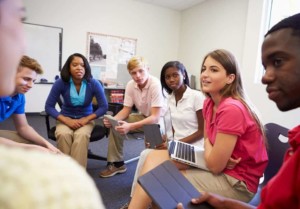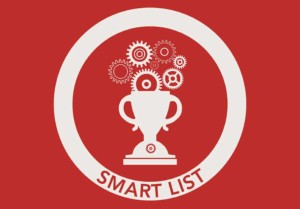Embedding SEL Across the Curriculum

The ability to manage time and attention, to direct learning, to read social situations and to work productively with others–these are the types of character strengths that will most determine success in school, life and work.
These traits and dispositions are developed in many ways–beginning at home and continued through positive youth development experiences, faith congregations, community connections (scouts, youth sports, fine arts), school experiences and more.
Character is caught as well as taught–too often, we’ve relied on the former. The teaching of social-emotional skills must be explicit. Kids should be meta about character strengths–when they recognize strengths in themselves and others, they can change a culture. While sometimes these skills can be taught in isolated incidents, it is most effective when integrated into school culture, curriculum and guidance services.
The Aspen Institute recently launched the National Commission on Social, Emotional, and Academic Development. Kudos to Aspen for the nomenclature and resulting acronym (SEAD), underscoring that social emotional learning and academic development are inextricably linked.
The goal is to build consensus around a lexicon, metrics and strategies that more fully embrace the integration of academic goals and SEL. We believe that one of the most effective strategies for marrying SEL and core subjects is to embed SEL into the formal curricula. Outlined below are numerous examples.
SCHOOLS/NETWORKS
1. Summit Public Schools. The innovative Summit network supports student outcomes in four quadrants: content, knowledge, cognitive skills, habits of success and real-life experiences (listen to a podcast discussion). All are mapped to integrated learning experiences. CAO Adam Carter describes the importance of habits of success as the thread that ties all content together:
“Habits of Success are really important. As educators, parents and community members, we know that they are the invisible thread that ties together the fabric of relationships and organizations. They are bound intimately with motivation and achievement. They count, but we don’t yet count them. We should.”
2. Evanston/Skokie School District. Superintendent Paul Goren has long placed an emphasis on SEL. Teachers in his district combine explicit SEL instruction with an embedded curricular approach where teachers take what they are teaching and incorporate social and emotional skills and competencies within them.
For example, The Diary of Anne Frank is taught not only from a language arts or historical point of view, it can also be taught with an eye on SEL. Teachers illustrate to students how Anne dealt with conflict in her life and encourage kids to reflect upon their own ways of dealing with conflict or crisis.
3. Thrive Public Schools. This San Diego-based school emphasizes personalized, project-based and social emotional learning. Principal Nicole Assisi reflects, “Interwoven in all we do at Thrive is an emphasis on students’ self-advocacy and self‐actualization.” Thrive values Social Emotional Learning, has a rubric to measure SEL progress, and created the short video below about their approach.“We emphasize self‐regulation and good decision-making in the pursuit of ambitious goals, helping students understand that some of the greatest learning can come from reflection on ‘failures’,” adds Assisi.
- What class are you feeling the most success in? What are some things that you are doing to make things go well?
- Do you have any concerns? What data in your PLP supports this concern? What resources and personal assets do you have available to you to help address this concern?
5. Grandview School District. Grandview is 1 of 40 schools in Washington State involved in a College Spark Washington foundation-supported initiative. SEL is embedded in a variety of ways: all schools have advisory, all students create a plan and share academic progress and exemplar work through regularly student-led conferences.Numerous aspects of the initiative are integrated with core subjects (e.g. in Language Arts, students work on a personal statement for college essay; in Social Studies, students conduct a civic volunteer project that connects to their interests). They’ve seen the number of students with college ready transcripts increase from 21.1% in 2011 to 72% in 2016.
6. Deer Park School District. Deer Park’s innovative and blended approach to improving school culture through focusing on strengths was featured in a recent EdWeek article. Thanks to a partnership between Mayerson Academy, VIA Institute on Character and Happify (an online gaming platform that supports social-emotional learning concepts), students are identifying and developing character strengths and recognizing strengths in all class periods.
7. New Tech Network. The NTN student outcomes rubric includes not only academic skills but also agency and collaboration. Agency means that students take ownership of their own learning. There is really nothing more “embedded” than that. In addition, students learn to be productive members of diverse teams with a commitment to shared success (#Embedded). Learn more about NTN in this feature and podcast.
8. Design39. Part of the Poway Unified School District, Design39 leverages collaboration to change the way “we do school.” By addressing core academics through a collaborative community model, SEL is naturally embedded–emphasizing creative confidence, design thinking, inquiry, global connections, courage and a growth mindset.
9. Beacon Network Schools. These two Denver middle schools, Grant Beacon and Kepner Beacon, stress character and provide qualitative and quantitative feedback every day in every class.
10. Rogers High School. When students see their principal care about their social-emotional health, they take notice. It’s not unusual for Washington State Principal of the Year Lori Wyborney to meet 1:1 with a dozen students. She says, “Students need to build relationships with adults. They need a lot of support. It takes all of us working with all our kids. We need social workers that can help families navigate the system. We can talk all day about all the statistics that come to the building and we could let every one of those be a barrier. We are not the NFL. We do not get to pick our team. We have to do whatever it takes to make students win.”
The Collaborative for Academic, Social, and Emotional Learning (CASEL)also recently published key insights from the Collaborating Districts initiative which offers numerous additional examples.
The reality is that students and adults alike need to draw from their social-emotional capacity across all settings. Whether you are in the classroom or the boardroom, being aware of your own feelings as well as those of others near you, knowing how to make good choices when it comes to the many decisions we make every day, and the ability to manage stress levels and persevere toward a goal are all imperative skills to successfully navigating day-to-day life.
For more, see:
- On Becoming More than Preparing
- How 2 Minutes of SEL Can Change the Day
- 12 SEL Organizations Making a Difference
Stay in-the-know with all things EdTech and innovations in learning by signing up to receive the weekly Smart Update. This post includes mentions of a Getting Smart partner. For a full list of partners, affiliate organizations and all other disclosures please see our Partner page.









0 Comments
Comments for this post are closed